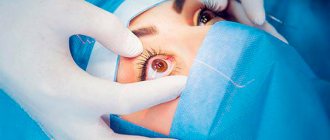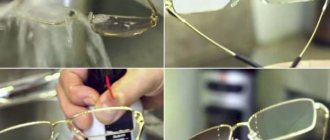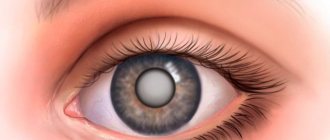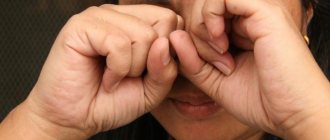Trocar cystostomy is a complex surgical operation that is performed to treat diseases of the urinary system. It involves installing a cystoma - a catheter tube directly into the bladder. The operation is performed under general anesthesia. After it is carried out, the patient needs care, care and support. Without these components, the patient’s recovery and return to normal life is impossible.
When is trocar cystomy necessary?
Diseases of the urinary system cause people not only physical suffering and psychological discomfort, but also threaten life. Therefore, surgical treatment prescribed by a qualified doctor is the only correct option.
Trocar cystostomy is prescribed in the following cases:
- prostate adenoma and complications caused by it;
- neoplasms in the genitourinary system;
- abnormal structure of the genital organs;
- stones and rocky formations in the urinary canals, obstructing the outflow of urine;
- mechanical damage to the urethra due to injury to the penis;
- uncontrolled urination caused by psychological problems;
- abdominal surgeries, etc.
A cystoma is installed in cases where the patient, for a number of reasons, is unable to use a traditional catheter.
Bladder surgeries are performed in hospitals and medical centers. After the procedure, the patient, depending on his condition, is transferred to the intensive care ward or to the department ward, where he requires constant care and observation.
Basic information
A cystostomy is a special device for emptying the bladder. The tube and urinal are the main parts of the device. The cystostomy serves as an artificial connection between the bladder and the external environment and solves the problem of obstruction of the urethra. The device is installed by a urologist during surgery. Unlike a regular catheter, a cystostomy tube is inserted into the bladder through an incision in the abdominal wall. The urethra does not participate in the excretion of urine.
Indications for the procedure:
- Injuries of the genitourinary organs, in which the urethra is damaged.
- Surgical interventions in urology.
- Impossibility of conventional catheterization.
- The need for constant ease of emptying the bladder.
Thus, the main function of such a device is to restore the outflow of urine. The operation to install the tube is performed openly (laparotomy) or using trocar puncture. General anesthesia or local anesthesia is used. Careful care of your cystostomy helps reduce the risk of infection and other complications.
Trocar cystostomy: patient care after surgery
Like any operation performed under general anesthesia, trocar cystostomy entails a number of unpleasant manifestations for the patient. This is, first of all, a painful recovery from anesthesia, a failure in the life-supporting functions of the body, a long process of wound healing and recovery.
In the case of trocar cystostomy, a person has another additional difficulty - accepting and getting used to the new reality. The patient needs not only to learn how to care for a cystoma, but also to accept that his body will now work in a new way.
Therefore, when caring for a patient in the postoperative period, delicacy, kindness and patience are necessary. Patients may exhibit different behavioral reactions. Sometimes anger and despair arise. In such cases, one must not show intolerance, irritation or detachment. On the contrary, the patient should be treated with understanding and maximum care, and supported.
It is better if the responsibilities for caring for the patient are carried out not by close people, but by a qualified patronage worker. Because the patient may experience shame and embarrassment in front of a loved one, which aggravates his suffering.
Features of care
Features of patient care after trocar cystostomy are determined by the specifics of the operation. After the procedure, a person’s lifestyle changes - additional procedures for caring for a cystoma are included in the usual daily routine. Restrictions are being introduced on active sports, extreme tourism, as well as a complete ban on visiting saunas, swimming, overheating, and hypothermia.
Installation of a cystoma is not a death sentence, but new opportunities for life without pain and discomfort. It is important that the patient understands this and treats his new reality accordingly.
The most difficult period for the patient is the first days after the operation, when the person recovers from anesthesia. General physical malaise is accompanied by weakness and pain in the wound area. The patient cannot take care of himself independently.
During this difficult time, relatives usually provide support to a person. But caring for an operated patient who has a cystoma in his bladder is an extremely difficult, responsible task and requires special skills. The patient may be depressed, which complicates the situation for the caregiver.
If relatives do not have the opportunity to care for the patient, a worthy alternative is to seek help from a visiting nurse or nurse.
Necessary tools and care products
If the patient or his relatives independently care for the cystostomy, they need a first aid kit and some instruments, solutions and consumables. These include:
- sterile cystostomies (catheters) so that worn or damaged ones can be quickly replaced;
- new urinals (sterile, in undamaged packaging);
- several sets of medical gloves (sterile, in packaging);
- a roll of adhesive plaster;
- a set of antiseptic wipes;
- disinfectant solutions selected by a doctor;
- Janet syringe for rinsing;
- saline solution to remove salt deposits.
How to care for a patient immediately after trocar cystostomy
Caring for patients after surgery consists of general and special procedures. Special procedures are carried out by a medical professional, and general procedures are assigned to the person caring for the patient. They boil down to the following points:
- Hygiene and sterility. The patient must be provided with a clean bed, fresh towels, and cleanliness in the room where he is located. To do this, wet cleaning, ventilation, and quartz treatment are carried out regularly - at least twice a day.
- Wound treatment and skin hygiene. To avoid possible complications such as cystitis, pyelonephritis or urethritis, you need to maintain sterile cleanliness of the skin in the area where the catheter is installed. This is done using antiseptics prescribed by the doctor.
- Adjusting and monitoring the position of the urinal. The patient, out of habit or in his sleep, may move the cystostomy drainage or change the position of the urinal, which is unacceptable. During the first time after surgery, the caregiver makes sure that this does not happen. He draws the patient’s attention to what position the urinal should be in so that the patient gradually gets used to following the rules of caring for the cystoma.
- Monitoring the fluid level in the urine bag. It is necessary to monitor how much liquid is in the tank and drain it regularly to avoid overfilling. Immediately after the operation, the caregiver monitors this, and then the patient should take control.
- Stimulation of the bladder muscles by squeezing the cyst. This is necessary to avoid atrophy of muscle tissue, since after surgery the independent functioning of the bladder is impaired. The procedure is performed strictly in accordance with the instructions of the attending physician.
- Eating, dieting. Patients are prescribed a special diet. Salted, pickled, spicy foods are completely excluded. Preference is given to boiled, steamed, stewed food with a minimum salt content.
- Drinking regime. The caregiver ensures that the patient drinks regularly and helps him take fluids if he is not yet able to do so on his own.
Diet for trocar cystostomy
People who have cystostomy drainage installed must follow a diet and refrain from eating a number of foods. Meals should be regular and leisurely. During the first time after the operation, this is monitored by a caregiver - a relative or a visiting nurse.
It is not recommended to include fried and smoked, fatty meat, mushrooms, sausages, canned food, as well as marinades and pickles in your diet. You should also exclude dairy products and citrus fruits. The former are rich in calcium, which provokes stone disease, the latter contain oxalic acid, which irritates the mucous membranes of the urinary tract.
Vegetable soups and salads, boiled fish, lean meat, berries, fruits, and herbs are recommended for consumption.
As for drinks, patients with diseases of the genitourinary system should refrain from carbonated water, coffee, strong tea, lemonade, alcohol, and freshly squeezed juices. Herbal and green teas, rosehip decoction, and dried fruit compote will be useful.
Patients need to follow not only a diet, but also a drinking regime. For diseases of the genitourinary system, you should drink at least 1.5-2 liters of liquid per day.
Caring for a cystostomy at home
Caring for a cystostomy at home
Cystostomy (epicystostomy) is a method of catheterization of the bladder using a special drainage tube (catheter) passing through the abdominal wall. A cystostomy is installed due to injuries to the urethra, bladder, prostatic hypertrophy, stricture changes, tumors of the urinary system, after surgery on the urethra, as well as for patients with dysfunction of the pelvic organs due to spinal cord injuries. Patients with such pathologies usually cannot urinate on their own and cannot have a Foley catheter installed through the urinary tract. A cystostomy is installed both for a short period (up to 1 week) and for a longer period, in some cases for life. Proper care of cystostomy drainage is especially important for these patients. This allows you to prevent the development of inflammatory processes and dangerous complications. Patients or their relatives must be taught how to properly care for a cystostomy at home, the specifics of cleaning, replacing drainage, and things that should be immediately addressed.
Specialized care in medical institutions and care for cystostomy at home are based on general rules and recommendations:
- It is necessary to ensure that the tube of the training catheter and the tube of the urinal (into which urine flows through the cystostomy catheter) are not twisted or bent, do not have ruptures, cracks, or leak.
- You need to carefully monitor the condition of the skin around the cystostomy catheter - it should be clean and free of inflammation. To maintain the skin in normal condition, it is recommended to use antiseptic solutions and ointments, which will be prescribed to the patient by the attending physician.
- Patients with a cystostomy must ensure that the urine collection bag is located below the bladder. If the patient moves independently and leads an active life, it is recommended to use leg urinals with a fastening system (Velcro) below the knee. For bedridden patients or for sleeping at night, bedside urine collection bags located below the bladder can be used. They must be firmly fixed.
- It is necessary to consult with your doctor: to prevent “shrinking” of the bladder and train the muscles, it is recommended to clamp the catheter for a while to simulate the natural process of urination. Such training contributes to the patient’s speedy recovery, but should be carried out only after consultation with the attending physician.
- Hygiene: shower only. Patients are strictly not recommended to take baths, swim, or visit baths and saunas.
- Patients must follow a drinking regime - drink at least 1.5-2 liters of fluid per day.
- Patients or those responsible for their care should never administer any solution into the bladder themselves. This can lead to the development of infectious and inflammatory diseases and severe complications.
- If the catheter begins to work poorly or becomes obstructed, you should contact your doctor or replace the cystostomy yourself (only if you are trained and know how to do this!).
- It is necessary to empty the urine bag regularly, without allowing it to become too full. On average, urinals with a volume of more than 1.5 liters should be drained every 8 hours, small ones (volume 0.5-1 liters) - every 3-4 hours. Urine from the urine bag must be drained through a special valve.
- The cystostomy catheter must be changed regularly. Optimally – once a week. The main thing is at least once every 30 days.
- It is also recommended to change the urine bag - every 24-48 hours. If this is not possible, at least once a week.
It is recommended to always keep a spare cystostomy catheter available in case of emergency or when a quick replacement is necessary.
All manipulations with the cystostomy must be performed wearing sterile gloves, and hands should be washed thoroughly before the procedure. The skin around the catheter should be cleaned and disinfected every day. You can also place a sterile medicated bandage around the catheter and secure it with adhesive tape. Iodine solution, alcohol, hydrogen peroxide, octenisept, miramistin, etc. are suitable for treating the skin with an antiseptic.
To care for a cystostomy at home, it is recommended to always keep in your first aid kit:
- New sterile cystostomy catheter (drainage) - similar in size/diameter to the previous one!
- Several new urine bags
- Sterile gloves
- Dressing material (sterile wipes, adhesive plasters, plaster-bandage)
- Antiseptic solution
When do you need to see a doctor urgently?
- If the catheter falls out/pulls out, if you cannot replace it yourself. The sooner you see a doctor, the better.
- If there is a large amount of blood or blood clots in the urine.
- Body temperature rose above 38 C.
- Inflammation of the skin around the catheter has occurred - it is red, irritated, there is tissue swelling, pain at the site where the catheter is installed.
- Severe pain in the lower back or side, especially in combination with chills, high fever, and nausea.
- Decreased volume or complete cessation of urine outflow through the catheter.
- Constant leakage of urine past the cystostomy catheter.
Rules for caring for patients after trocar cystostomy
When caring for patients with cystoma, the following rules must be observed:
- Carefully keep your hands clean. Any infection can easily penetrate an open wound. If you are in contact with a patient, you must take care of personal hygiene. Hands must be washed with soap, treated with an antiseptic, wear a medical gown over regular clothes, and use removable shoes indoors.
- Monitor physiological indicators. After surgery, the patient must regularly measure pulse, blood pressure, and body temperature.
- Always have a spare set of catheters and urine bags on hand in sterile packaging.
- Monitor the patient's hygiene. Patients with cystoma are prohibited from taking a bath, and showering is not recommended in the first days after surgery. Therefore, body hygiene has to be carried out with the help of wet towels and napkins.
- Pay attention to the psychological state of the patient and promptly respond to his requests.
Possible consequences of cystostomy
In case of improper care of a cystostomy, some complications are possible that require medical intervention:
- Catheter loss and inability to independently replace the catheter, as well as urine leakage past the drainage.
- The appearance of a significant amount of bloody discharge in the urine.
- Increased body temperature.
- The appearance of redness, irritation and other signs of an infectious process around the drainage.
- The appearance of pain in the lateral area and in the lumbar area.
- Decreased volume or complete absence of urine excreted through the catheter.
Psychological aspect
People who have undergone cystostomy drainage surgery need sensitive attention and support. For many of them, the operation becomes a psychological shock. Patients may find it difficult to come to terms with the idea that their lifestyle will now change. Many people develop a feeling of inferiority. Often, symptoms of depression are added to the physiological discomfort after surgery.
Therefore, it is very important that there is an understanding person next to the patient during rehabilitation, who is ready not only to ensure hygiene, but also to listen, reassure, and encourage. It is necessary to consistently and calmly convince the patient that life with a cystoma is not a death sentence, but a new stage that gives the opportunity to enjoy the world without pain and suffering.
The patient's relatives and friends, empathizing with him and imbued with his decadent moods, do not always find spiritual strength and the right words to support.
Professional health visitors cope with this much better. Experience in communicating with patients and general training have an impact. If you have the opportunity to choose, then it would be better to entrust the care of your loved one to professionals. In contact with








